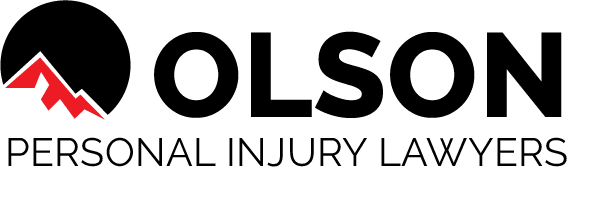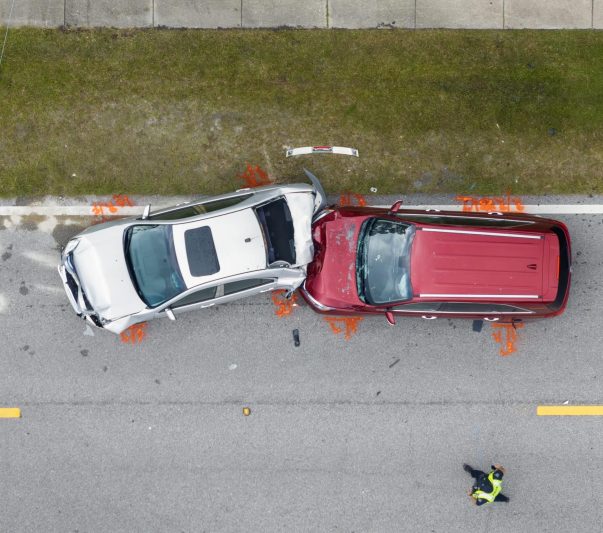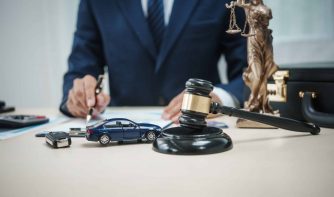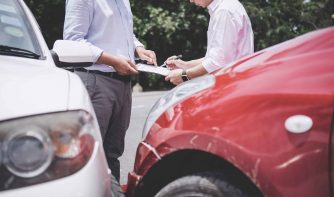Ideally, you should be able to recover all your damages for an accident that was primarily caused by another driver. However, some factors can reduce your settlement, which we’ll discuss later in this article. First, let’s look at what the potential damages are:
- Medical expenses. If you’re hurt in a Wyoming car crash, you could have expensive medical bills – even with good health insurance. Copays, deductibles, treatments the health insurance company “doesn’t cover” – it all adds up. You’re entitled to seek compensation for these expenses, as well as any additional costs related to your healthcare. These might include mobility aids, equipment for physical therapy exercises at home, travel expenses if you have to see a non-local specialist, etc.
- Lost income. The only thing worse than a pile of medical bills from your accident is being expected to pay those bills while you’re out of work. Yet this is the situation many people find themselves in after a car accident – they can’t return to work until their injuries heal, and their healthcare providers expect payment now. Even if you have paid time off (PTO), you may not have enough for the time you’ll be off work. Additionally, you could use up all your vacation days, and you’re not exactly having a good time. Fortunately, your lawyer can help you seek compensation for any time you missed at work, paid or not.
- Lost earning potential. What if your injuries are permanent, and you can’t go back to work at all? Or, you may not be able to work as many hours or do the same kind of job. If this happens, the reduced income amounts to lost earning potential, which is another damage you can recover.
- Permanent disability or disfigurement. Even if your earning potential has not changed, a disability or disfigurement can negatively impact the quality of your life.
- Pain and suffering. When we talk about pain and suffering, most people think of physical pain from an injury like a broken arm or leg. This is certainly an example of pain and suffering, but mental anguish or emotional suffering shouldn’t be overlooked either. The trauma of a car accident leaves many people with feelings of anxiety, depression, or symptoms of PTSD. Both kinds of pain and suffering should be considered when calculating damages.
- Property damage. This usually means getting your car repairs covered or replacement costs if the car is totaled. In some cases, people may also have other property damage, such as damage to a phone or laptop that was in the car. If you need to pay for a rental car while yours is being repaired, you may be able to recover these costs as well.
- Loss of companionship or consortium. If your accident caused injuries that harmed an important relationship or led to the death of a loved one, you can seek damages for these losses.
- Wrongful death. Some people wonder what the point is in filing a wrongful death lawsuit. They may feel it’s pointless because the money won’t bring back their loved ones. Indeed, financial compensation won’t replace a loved one. However, it can be used to help your family recover and carry out your deceased loved one’s plans. The compensation could go toward your children’s education, living expenses, family therapy, and anything else you need to move forward after a terrible loss.
What is the Max Settlement for a Car Accident?
The state of Wyoming does not place a cap on settlements for either economic damages (medical bills, lost income, other expenses) or non-economic damages (pain and suffering). The state’s Constitution specifically forbids these limits. In theory, you can receive a settlement in any amount you think your damages are worth. But as we mentioned earlier in this article, you will not necessarily get the total damages you seek for several reasons.
Fault, Modified Comparative Negligence, and Wyoming’s “51% Bar” Rule
At first, getting compensation for your damages may seem like a straightforward process. You file a claim with the at-fault driver’s car insurance company, and they pay it. But there are several ways that this process quickly becomes complicated.
First, there’s a good chance the other driver will deny they were at fault. The insurance adjuster for your claim will probably be inclined to agree – after all, their job is to save the insurance company money. If the accident was your fault, they’re off the hook!
Doesn’t the Police Report Prove Who Was at Fault?
No, but it is an essential piece of evidence in your case. The police report contains information gathered by the responding officer or officers, including both drivers’ statements, witness statements, observations about damage to the vehicles, etc. If one or both drivers were cited for infractions, this will be noted. There is also a place for the officer to draw a picture of how they think the accident transpired.
One problem is that the information gathered could be incomplete or confusing. Sometimes the drivers’ accounts conflict – and maybe even witness accounts. Accidents often happen quickly, and many times witnesses are mistaken. Even the drivers could be unclear about fault – it’s not uncommon for drivers to think they were at fault when they weren’t! (For this reason, we strongly recommend that you don’t speculate about fault at the scene.)
When these confusing situations happen, the officer is expected to make an educated guess about what happened. If there is little hard evidence and conflicting accounts, they may choose not to cite anyone. However, even if they do ticket the other driver for a moving violation, that driver can still argue that the officer was mistaken and they were not at fault.
Car accidents can cause life-altering injuries and leave you with significant financial burdens. If you’ve been hurt due to someone else’s negligence, you may have the right to compensation. Our car accident lawyers are here to help you get justice.
What About Shared Fault?
To add another complication, an accident is not necessarily the fault of one driver. In fact, we see many accidents where both drivers are partially responsible. Like many states, Wyoming uses modified comparative negligence, a system in which fault is apportioned between the parties. In a trial, the jury is tasked with attributing a percentage of fault to each driver. Someone who is deemed mainly at fault (at least 51 percent) is barred from recovering damages from the other party. The lesser-responsible driver can recover damages from the mostly-at-fault driver, but their own percentage of fault is subtracted from the damages. For example, if you have $10,000 in damages and are 10 percent at fault, you could only collect $9,000.
Once you understand the “51% bar rule,” it’s easier to understand why the other driver – and their insurance company – are so eager to push the narrative that you were at fault. They don’t have to prove you were solely responsible for the accident to save money. They don’t even have to prove you were primarily responsible (although they would prefer that outcome). The insurance company can reduce its liability merely by convincing a jury that you had some degree of fault.
Of course, most car insurance cases don’t end in a jury trial. Instead, we negotiate with the at-fault driver’s insurance company, and sometimes other parties, to get you the settlement you deserve. But the perception of shared fault is still crucial because the insurance adjuster will be more willing to approve a reasonable settlement if they know they stand little chance of demonstrating you were at fault in court. For that reason, we always prepare as if we were going to trial, collecting as much evidence as possible to show the other driver caused the accident.
How Can You Convince the Other Driver’s Insurance Adjuster That You Weren’t At Fault?
Contact a Wyoming car accident lawyer for assistance. Attempting to negotiate with the insurance company yourself is not only time-consuming and frustrating, but it can also cost you money. Insurance companies usually record their phone calls, and the insurance adjuster will review everything you said, looking for anything they can misinterpret to mean you were at fault. It’s very easy to inadvertently say something that makes your situation much worse.
Another problem is the fast settlement offer – yes, that sounds like a good thing. But in cases where there is strong evidence that only the other driver was at fault, the insurance company may shift to reducing liability. They might make you a lowball offer that doesn’t come close to covering all your damages. A surprising number of people accept these offers, only to realize later they didn’t receive enough compensation. If you’ve received an offer from an insurance company, please have it reviewed by a legal expert before you make a decision.
Get Help From a Wyoming Car Accident Attorney
Please contact the Olson Personal Injury Lawyers for a free case evaluation at (970) 633-3673 Attorney Sean Olson personally meets with every client to learn about their situation, answer questions, and explain the options. Our goal is to ensure you receive appropriate compensation for your injuries, and for that purpose, we will take on big insurance companies if necessary.







